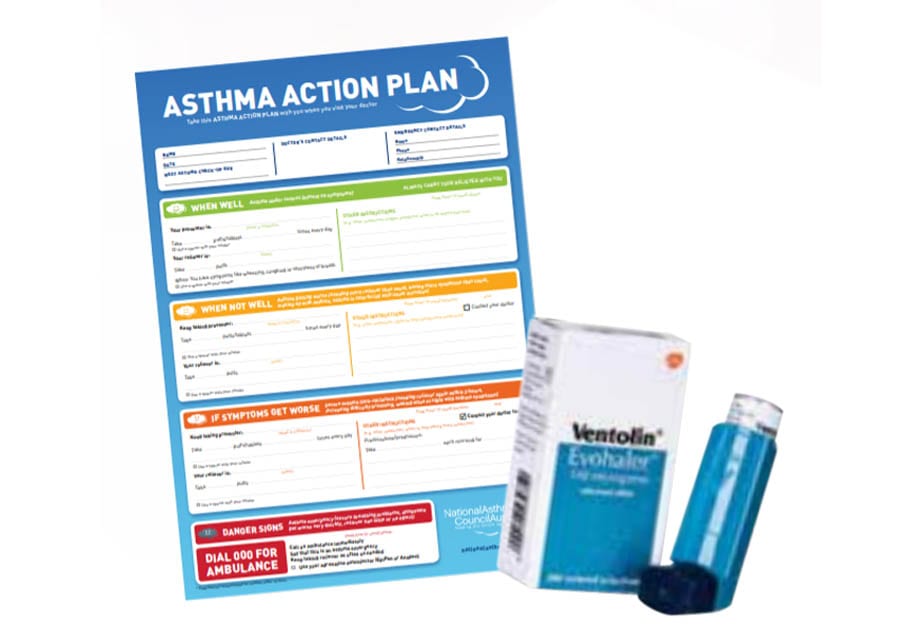ASTHMA STATISTICS
ACCORDING TO THE AUSTRALIAN INSTITUTE OF HEALTH AND WELFARE, ONE IN EVERY NINE AUSTRALIANS HAVE ASTHMA.
Asthma is:
- slightly more common in women.
- more common in boys younger than 14, but more common in females 15 years and over
- also more common in people living in remote areas than in cities
UNDERSTANDING ASTHMA
Asthma is a long term inflammatory airways disease that causes the muscles in the airways to tighten and the lining of the airway to become swollen and inflamed. These changes cause the airways to become narrow, making breathing difficult and causing coughing, a whistling sound when you breathe out, and shortness of breath. Asthma can be triggered by a range of factors and currently, there is no cure, but with good management, people with asthma can live a normal and active life.
Asthma runs strongly in families but it affects everyone differently.
SYMPTOMS OF ASTHMA
Symptoms of asthma can include:
- Wheezing – a whistling noise when breathing
- Shortness of breath
- Chest tightness or pain
- Coughing
These symptoms are often worse at night, in the early morning, or during exercise.
Symptoms that your Asthma could be worsening include:
- Asthma signs and symptoms that are more frequent and bothersome
- Increased difficulty breathing – by visiting your pharmacy we can measure how well your lungs are working using a peak flow meter
- Use of a quick-relief inhaler more often than normal
TREATMENT FOR ASTHMA
There is a range of medications and devices that are available to manage and control asthma attacks. The most common types of medications are relievers and preventers, they are usually in inhalers or puffers.
Everyone with asthma should have a reliever (a “puffer”) to use whenever they experience symptoms to relax the muscles around the airways and open them up within minutes, their effects last for up to four hours. Most relievers are available from pharmacies without a prescription. Do not overuse your reliever, use only when you have symptoms or if your doctor tells you to take it before exercise.
Most adults with asthma need to take a low dose of an inhaled corticosteroid preventer medicine every day to reduce inflammation inside the airways and lessen the risk of a severe asthma flare-up. If you have been prescribed a preventer, you should take it every day even when you have no symptoms and also during colds and asthma flare-ups.
All medicines have possible side effects. It is important to rinse the mouth with water after using the preventer as inhaled corticosteroid medicines can cause hoarseness of the voice and oral thrush. The risk can be reduced by using a spacer with the puffer to help increase the amount of the medicine that reaches the small airways in the lungs. Puffers are available from pharmacies and your Pharmacists can help you to choose a suitable spacer and show you how to use it.
ASTHMA ACTION PLAN
In order to manage your asthma effectively, it is important to have a written Asthma Action Plan with your doctor. This will help you recognise worsening asthma symptoms and give clear instructions on what to do in response. Even if you think you are in control of your asthma, ask yourself, “Am I needing my reliever on more than 2 days a week?” If the answer is yes, your asthma might be controlling you.
The team at Woorim Surfside Pharmacy is here to answer any questions about your asthma medications. If you feel you need to use your Ventolin or Asmol inhaler more than a few times a week or are suffering the symptoms of asthma visit Sing, our Pharmacist Manager, for a free in pharmacy consultation.
References:
- National Asthma Council Australia https://www.nationalasthma.org.au/ unders
- Australian Institute of Health and Welfare (AIHW) 2018. Asthma Snapshot, Canberra: AIHW
- Asthma Australia https://asthma.org.au
